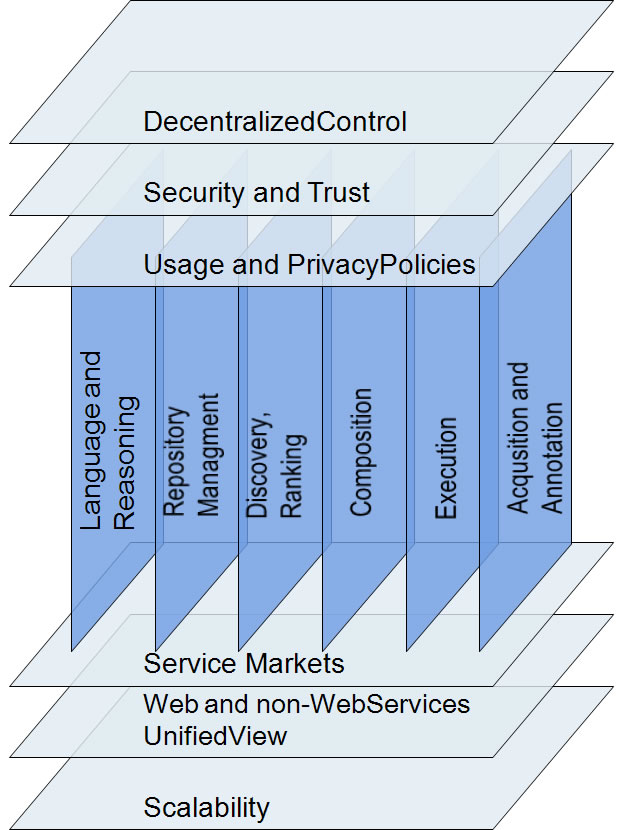The scope of this part of our research is the Semi-automated mining of processes and describe them semantically. Mining processes from data repositories offers to the organizations the solution of obtaining with more efficiency and effectiveness relevant knowledge about their running business processes and services. These processes are often complex, as well as difficult to understand and model manually. Being able to automatically discover the processes and obtain models that formally describe them, allows us to detect possible problems or bottlenecks in our systems, and make further optimizations. Another advantage of obtaining such process models is that we are able to apply composition among different processes exposed as services, and make them executable.
Semantic Process Mining
The set of data to be analyzed and mined for services and process descriptions may be available as a source in various formats, such as in relational databases, websites, WSDL files, or other semi-structured files. Each source is read separately serving as input for the Automated Learning module.

The Automated Learning is a central component in the scope of this research work, since it will be responsible for mining the data source and generating appropriate ontologies and process annotations. Process descriptions and ontologies are then registered in the Process Base, using the Repository Management System.
These descriptions of processes and services may be later searched and displayed in a graphical interface, through which the user is also able to modify the process model. Using the graphical tools, the user may correct parts of the generated process model or add further annotations, to make the derived model more accurate and complete.
Process Mining Methodology

For each type of dataset, we make a selection of the metadata and data analysed as the most appropriate for including process descriptions. These are addressed as target data. They will be further preprocessed to reduce noises and tidy up data, and then transformed possibly into an event-based format where we will deploy process learning mechanisms.
The transformed data will include information about the services of which the process is composed, roles of people that have conducted the activities, artifacts generated during the process, and relationships between these elements.
The final output of mining the transformed dataset will be the formal description of the process that we store in our Process Base. In the graphical editor, this process will be displayed in a formal graph representation based on its formal description. Though the editor it can also be modified and refined.
Mining Semantic Descriptions of Processes on the Web: a semi-automatic Approach
Link to the Suprime Process Description Editor
Repository of Ontologies and Process Descriptions
The process descriptions and ontology models of our repository are displayed in the main page, central section of the editor. A table view as illustrated in the figure below may represent a more comprehensive form of the repository.

Create a new Suprime Process Model
A new suprime process model may be created and enriched with elements found in the Shape Repository panel, as displayed in the following figure:

Create a new Suprime Ontology Model
A new suprime ontology model, containing Concepts and Instances, as well as relationships among them, may be created as displayed in the figure below:

]]>

















